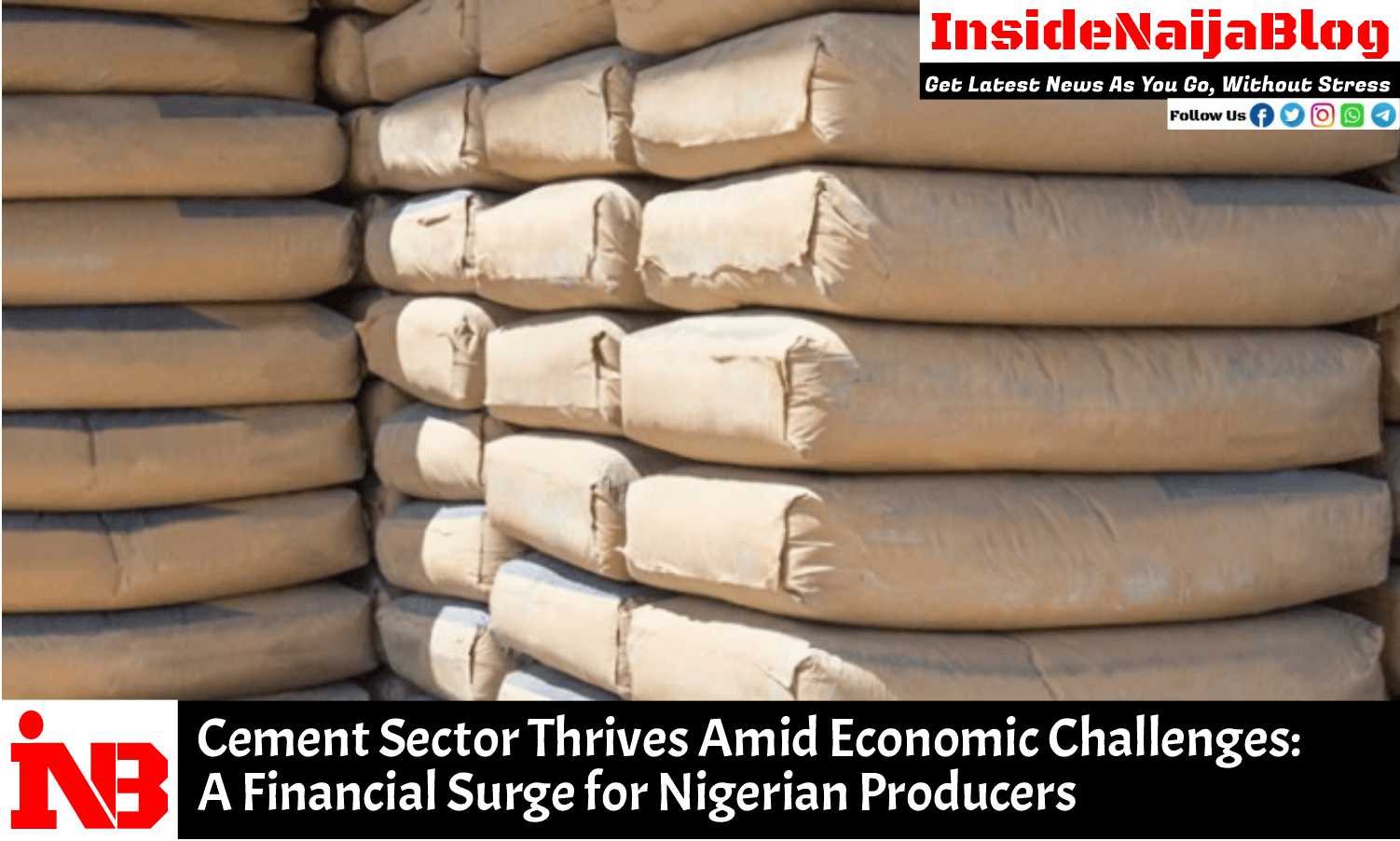Despite the challenging economic landscape marked by inflation, foreign exchange volatility, and declining consumer purchasing power, Nigeria’s cement producers are experiencing significant financial growth. Recent reports indicate that leading companies in the sector have seen a rise in sales volume, revenue, and profits, defying broader economic trends.
Strong Financial Performance
Findings from Financial Vanguard reveal that cement producers, including industry leaders Dangote Cement Plc, BUA Cement Plc, and Lafarge Africa Plc, have collectively reported a remarkable 76.6% increase in net sales revenue for the first half of 2024, reaching ₦2.419 trillion compared to ₦1.049 trillion in the same period last year. This surge is attributed to both increased sales volume and higher product prices.
Dangote Cement led the way with ₦1.76 trillion in net sales, marking an 85.1% increase from ₦950.83 billion in H1 2023. BUA Cement and Lafarge Africa followed with total sales of ₦363.94 billion and ₦295.58 billion, reflecting 64.6% and 45% growth, respectively. Notably, Dangote Cement achieved a 3.8% rise in overall sales volume, bolstered by a 10.93% increase in its Nigeria operations.
Resilience Amid Economic Headwinds
The performance of these cement producers highlights a paradox: while macroeconomic challenges such as inflationary pressures and rising production costs have escalated, a segment of consumers continues to exhibit robust purchasing power, enabling them to invest in non-essential goods like cement. Current retail prices for cement hover between ₦7,400 and ₦8,000 per 50 kg bag, up from about ₦6,000 a year ago, illustrating the sector’s resilience.
Investment analysts remain optimistic, forecasting continued growth. CardinalStone Finance predicts a 14.6% Year-on-Year rebound in combined volumes for the key players, estimating production to reach 32.8 million metric tons (MMT) in 2024. This contrasts with a 3.5% decline in industry output volume in 2023, primarily attributed to the cash crunch resulting from poorly implemented economic policies.
Outlook and Investor Sentiment
The outlook for the cement industry remains positive, driven by increased construction activity from both public and private sectors, supported by the federal government’s heightened capital expenditure allocation. Analysts at Cordros Capital note that a significant ₦13.77 trillion has been allocated for capital projects, with an anticipated implementation rate of 37.8%. This increased spending is expected to fuel demand for cement, with projections suggesting sales volume growth of 3.1% for Dangote Cement, 10.4% for Lafarge Africa, and 21.7% for BUA Cement in 2024.
Investor confidence is reflected in stock performance, with Dangote Cement’s shares rising 105.3% to ₦656.70 per share as of September 27, 2024, from ₦319.90 at the start of the year. BUA Cement and Lafarge Africa also saw returns of 40.4% and 8.1%, respectively.
Expert Insights
Industry experts attribute the surge in sales volume to increased capital expenditure on infrastructure projects and housing developments. Chinazom Izuorah of Parthian Partners emphasizes the role of government initiatives and contracts awarded for construction, which are enhancing demand for cement. Victor Chiazor from FSL Securities adds that the recovery from last year’s economic slowdown, exacerbated by the elections and cash shortages, has led to higher activity levels in the construction sector.
As cement producers navigate these macroeconomic challenges, their ability to adapt and grow indicates a promising trajectory for the industry. With ongoing investments in infrastructure and the government’s commitment to capital projects, the cement sector is well-positioned to capitalize on future opportunities.




